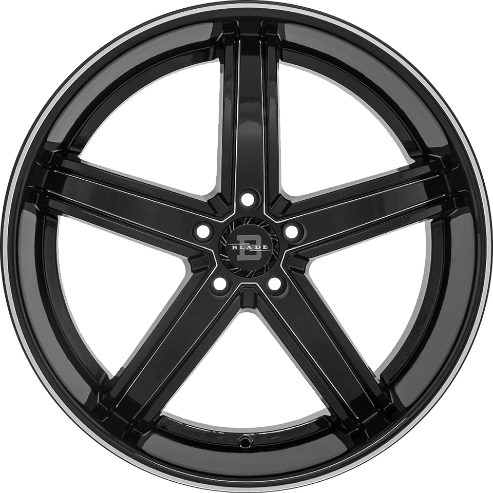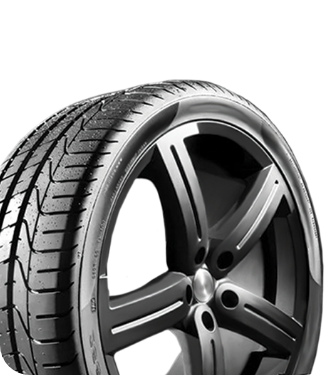

Choosing the Right Tires for Heavy-Duty Trucks
Safety Tips | 
To get the most use out of your truck, you need the right tires. They directly impact your vehicle’s performance, safety, and efficiency. Choosing the right tires for heavy-duty trucks may feel overwhelming with so many options, but we’re here to simplify the process.
From hauling heavy loads and navigating rugged terrains to clocking long hours on highways, the right set of tires keeps your truck running smoothly and safely while providing a comfortable, reliable ride.
1. Assess Your Truck’s Purpose
Every heavy-duty truck has a specific role. Understanding yours is the first step in selecting the right tires. Are you primarily using it for long-haul transportation, construction site tasks, or towing heavy loads? Different tires are designed for different functionalities:
- Long-haul driving requires low rolling resistance tires for better fuel efficiency and durability.
- Construction or off-road usage demands tires with aggressive tread patterns and reinforced sidewalls for traction and toughness.
- Combination-use trucks may benefit from all-position tires, offering versatility for mixed conditions.
Choosing tires tailored to your needs ensures strong performance in real-world conditions.
2. Know Your Tire Types
There are several types of tires made specifically for heavy-duty trucks. Here’s a quick breakdown of the most common categories to help you identify what suits your vehicle’s requirements best:
- Steer tires: Handle maneuvering, offer precision, and reduce wear along front axles. Ideal for highway driving fleets as they provide excellent control.
- Drive tires: Built for traction and mounted on the rear-wheel drive axle, these make severe-weather or steep-incline driving safer.
- Trailer tires: Perfect for trucks towing loads, these have tough sidewalls designed to handle extra weight without affecting towing stability.
Understanding how each tire functions can help narrow down the ideal selection.
3. Focus on Load Ratings
Heavy-duty trucks are made to carry significant weight, but choosing an incorrect load-rated tire could compromise your truck’s performance and safety. A tire’s load index tells you the maximum weight it can handle safely.
Confirm that this rating exceeds your truck’s axle weight or hauling capacity. Also, consider how evenly weight will be distributed across all tires when fully loaded. Improperly rated tires can wear out faster or cause failure under stress, leading to costly and preventable risks.

4. Check for Durability Features
Because heavy-duty trucks face extended hours on the road and challenging conditions, durability in tire construction makes a significant difference. Look for these durability-enhancing features when making your choice:
- Tread design: Deep tread patterns improve lifespan and traction on gravel, dirt, or uneven surfaces.
- Reinforced compounds: Harder rubber compounds add puncture resistance for rugged terrain.
- Steel belts: Extra layers of steel help reduce wear, improving mileage without performance loss.
Durable tires help cut operating costs and reduce unnecessary downtime, maximizing the productivity of your truck.
5. Evaluate Traction Requirements
Not every truck operates in dry weather or on smoothly paved streets. Traction matters if your work involves driving through snow, mud, rain, or loose gravel. All-weather or all-season options may work for mixed road use, while specialized tires like mud-terrain or snow-rated tires are better suited for extreme conditions.
- Snow-rated tires are ideal for winter, ensuring grip in ice and snow. Look for the three-peak mountain snowflake (3PMSF) symbol to confirm winter readiness.
- On-road tires suit paved highways, offering optimized grip and comfort at high speeds.
- Off-road tires provide maximum stability on unpaved roads, featuring durable sidewalls that can take a beating.
Matching the tread to your region or terrain saves wear-and-tear during seasonal shifts.
6. Prioritize Comfort Without Sacrificing Functionality
Heavy-duty truck tires influence more than traction or carrying capacity—they affect your overall driving comfort. While you shouldn’t compromise essential functionality (like load or speed ratings), you can achieve better ride quality by carefully balancing features like tread stiffness and noise-reduction designs.
Road tires often have quieter operations than off-road or mud-tire counterparts, while low-profile tires provide stability without compromising control.
7. Look for Value, Not Just Price
Sometimes, the price tag can reflect the quality of your heavy-duty tires. Selecting the cheapest option up front is tempting, especially when you operate under a tight budget, but don’t compromise value for short-term savings. Durable tires with solid warranties often outlast low-cost alternatives significantly, saving on replacement costs in the long term.

8. Stay Updated on Regional Laws
Laws and regulations regarding tire sizes and modification exist across different regions. For instance, oversize tires might require compatibility inspections or could face restrictions on legal usage. Familiarize yourself with these rules before deciding to prevent fines or compliance issues later.
9. Schedule Regular Maintenance
Your truck’s tires carry massive product loads and absorb long driving hours, so their efficiency depends heavily on routine inspections. Align wheels properly, check pressure regularly, and schedule rotations during every service interval. Regular maintenance ensures longer tire life and consistent safety throughout.
10. Consider Fuel Efficiency
Fuel efficiency isn’t just about the engine—your tires matter too. Low rolling resistance tires reduce energy use, cutting fuel consumption and saving costs on long hauls.
Proper tire inflation is also key; underinflated tires increase resistance and fuel use, while correctly inflated ones optimize performance. While low rolling resistance tires may cost more upfront, their long-term savings make them a smart investment for fuel-conscious fleets.
11. Explore Retread Options
Maximize sustainability and cut costs with retread tires. By replacing the worn tread of used tires, retreading reduces waste and saves money—making it a top choice for fleet operators and truck owners.
Modern retreads pass strict quality tests, ensuring reliable performance. With proper maintenance, they deliver durability and efficiency, offering an eco-friendly alternative to new tires at a lower cost.
12. Ask the Experts
Making the right tire decision can feel overwhelming, especially when managing multiple factors such as terrain, load, and driving conditions. This is where seeking advice from tire specialists can make all the difference. Professional tire dealers and consultants can help assess your needs and recommend the best truck usage options.
A Trusted Choice for Heavy-Duty Truck Tires
When choosing the right tires for heavy-duty trucks, making informed decisions based on your truck’s purpose, terrain, and duties can extend tire life, improve safety, and enhance road performance.
If you’re searching for tires in Clovis, RNR Tire Express can equip your heavy-duty truck with tires built to perform under pressure. Visit today to speak with our specialists about finding the perfect fit for you and your truck’s unique demands.





